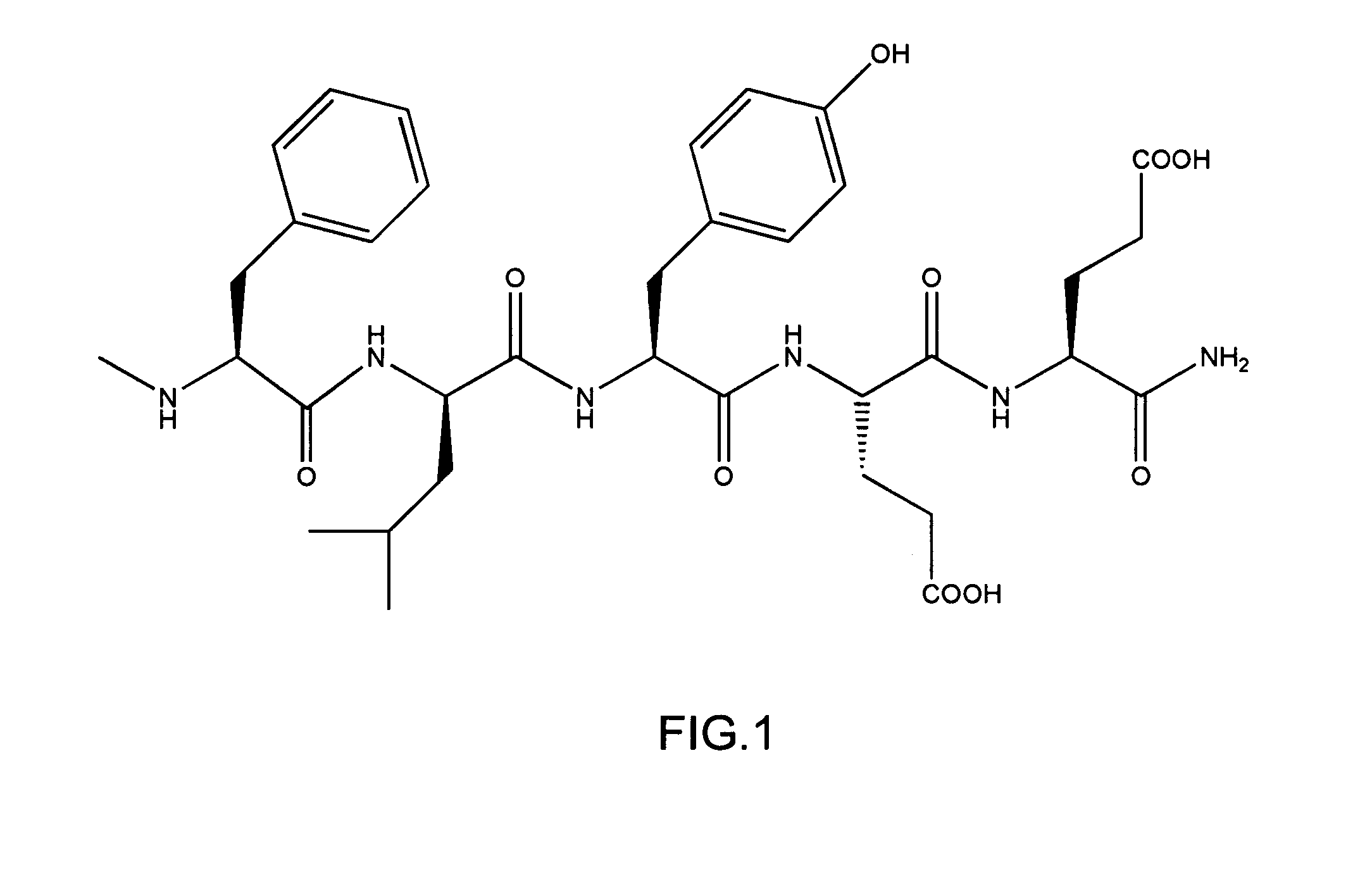Affinity markers for human serum albumin
a technology of affinity markers and human serum albumin, which is applied in the field of affinity markers, can solve the problems of limited drug life, many limitations on the efficacy of parenteral delivery in a bolus, and inadequate current drugs, and achieve the effect of limiting the side effects
- Summary
- Abstract
- Description
- Claims
- Application Information
AI Technical Summary
Benefits of technology
Problems solved by technology
Method used
Image
Examples
example 1
Construction of S-linked Affinity Label Libraries
[0107]A representative affinity label library according to the invention and having a p-thiobenzoic acid residue as a reactive group and a thioester bond as a reactive functional group was designed and constructed. The structure of the library is as follows:
E-Ca—SPhCO—Cb-A.
An example of an S-linked library member is Biotin-SPhCO—O1—O2—X1—X2—B—NH2, in which there is no Ca.
[0108]In the above described structure, X1 and X2 represent that all of the 9 selected L-amino acids appear in a well, O1 represents that only one of the 9 selected L-amino acids appear in a well, O2 represents that only one of the 9 selected D-amino acids appears in a well, and B represents that only one of the 9 selected L-amino acids appears in all 81 wells of a set. Biotin serves as the “entity,” as described herein. The “SPhCO” represents a p-thiobenzoyl reactive group R between the biotin “entity” and an oligomeric affinity group (O1—O2—X1—X2—B—NH2).
[0109]Biotin...
example 2
Construction of O-Linked Affinity Labeling Libraries
[0148]In addition to S-linked libraries, O-linked libraries can be synthesized having a p-hydroxybenzoic acid as a reactive functional group. Individual solid phase peptide synthesis is performed on an Applied Biosystems 433A Peptide Synthesizer using FastMoc Chemistry. Multiple peptide syntheses are performed on a Gilson AMS 422 Multiple Peptide Synthesizer using Fmoc chemistry. Solid phase reactions were monitored by ninhydrin test for completion. Amino acids and Rink Amide MBHA resin were obtained from NovaBiochem. Preparative HPLC was performed on a 21.4×250 mm C18 reverse phase column using 5–60% B (0.045% TFA in H2O and 0.045% TFA in CH3CN) gradient elution. Liquid Chromatography / Mass Spectrometry results were obtained using electrospray ionization on a Perkin Elmer Sciex API300 Mass Spectrometer using a 1.0×250 mm C18 reverse phase protein / peptide column using 0–70% B (0.045% TFA in H2O and 0.045% TFA in CH3CN) gradient elut...
example 3
Construction of N-Linked Affinity Labeling Libraries
[0160]In addition to S-linked and O-linked libraries, N-linked libraries can be synthesized having a p-aminobenzoic acid as a functional group. Individual solid phase peptide syntheses can be performed on an Applied Biosystems 433A Peptide Synthesizer using FastMoc Chemistry. Multiple peptide syntheses can be performed on a Gilson AMS 422 Multiple Peptide Synthesizer using Fmoc chemistry. Solid phase reactions can be monitored by ninhydrin test for completion. Amino acids and Rink Amide MBHA resin can be obtained from NovaBiochem. Preparative HPLC can be performed on a 21.4×250 mm C18 reverse phase column using 5–60% B (0.045% TFA in H2O and 0.045% TFA in CH3CN) gradient elution. Liquid Chromatography / Mass Spectrometry analysis can be obtained using electrospray ionization on a Perkin Elmer Sciex API300 Mass Spectrometer using a 1.0×250 mm C18 reverse phase protein / peptide column using 0–70% B (0.045% TFA in H2O and 0.045% TFA in C...
PUM
| Property | Measurement | Unit |
|---|---|---|
| pH | aaaaa | aaaaa |
| half life | aaaaa | aaaaa |
| half life | aaaaa | aaaaa |
Abstract
Description
Claims
Application Information
 Login to View More
Login to View More - R&D
- Intellectual Property
- Life Sciences
- Materials
- Tech Scout
- Unparalleled Data Quality
- Higher Quality Content
- 60% Fewer Hallucinations
Browse by: Latest US Patents, China's latest patents, Technical Efficacy Thesaurus, Application Domain, Technology Topic, Popular Technical Reports.
© 2025 PatSnap. All rights reserved.Legal|Privacy policy|Modern Slavery Act Transparency Statement|Sitemap|About US| Contact US: help@patsnap.com



